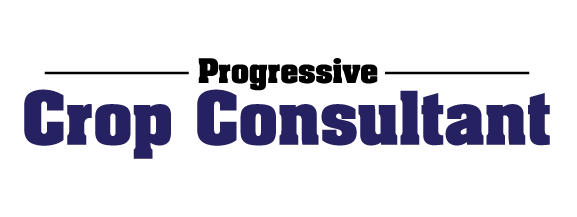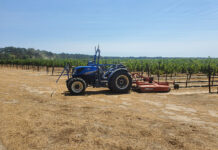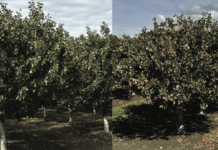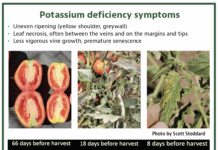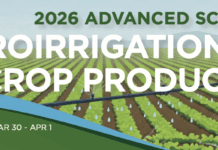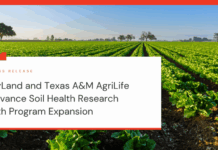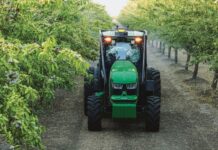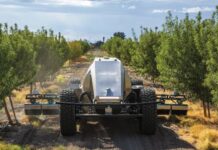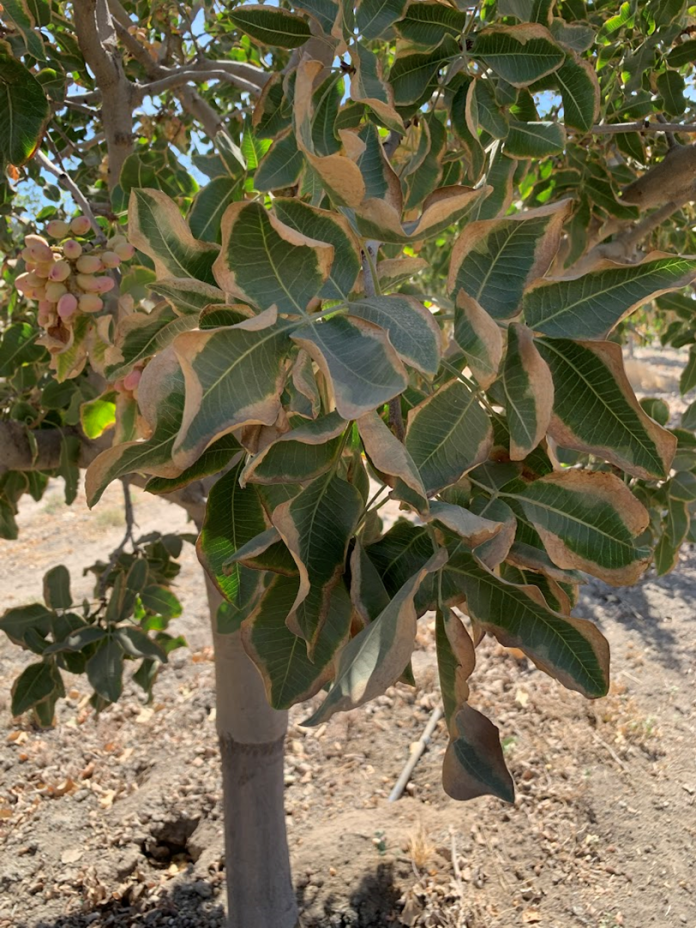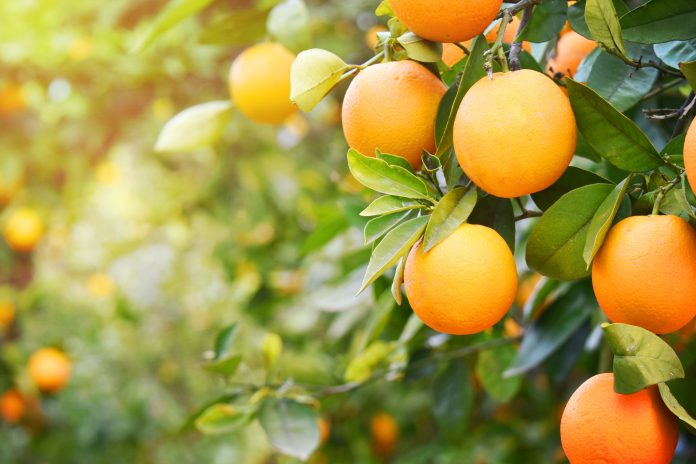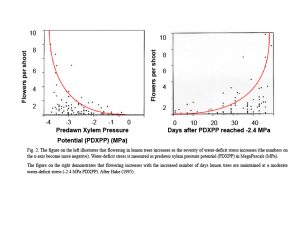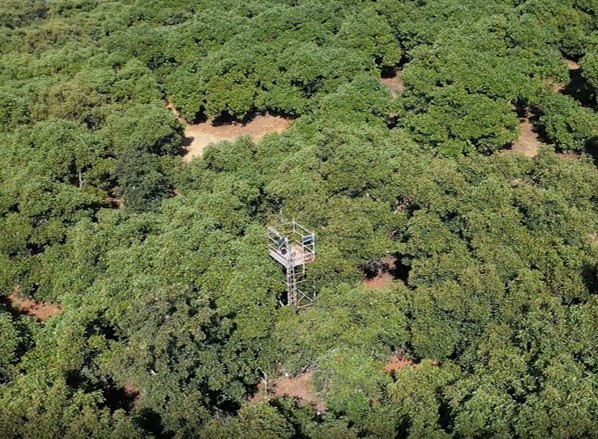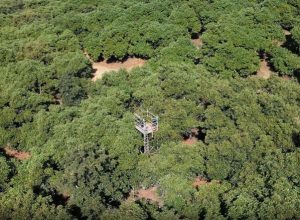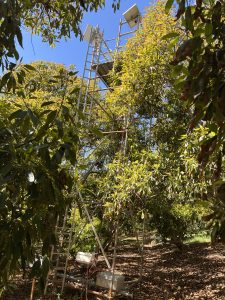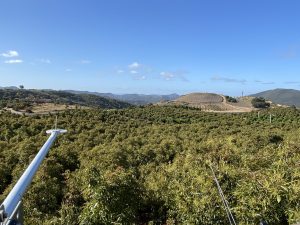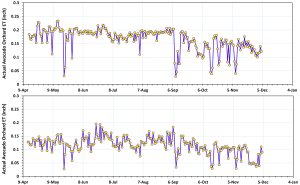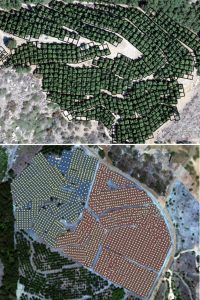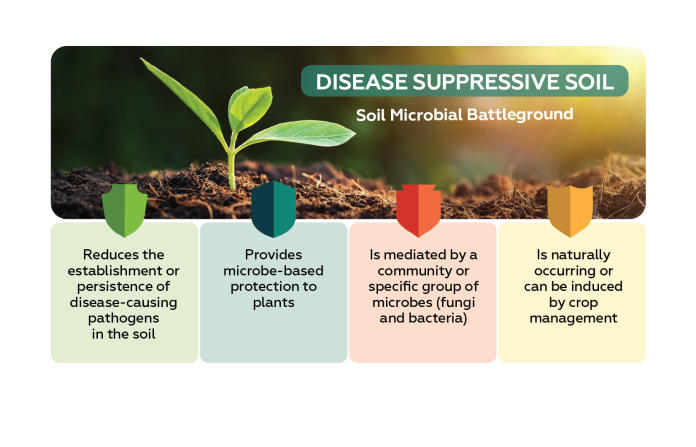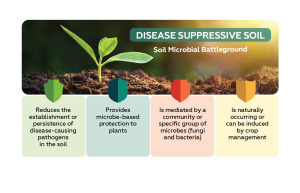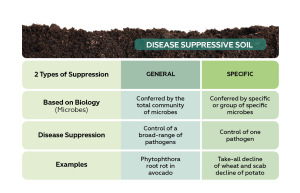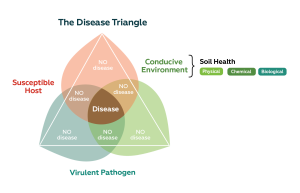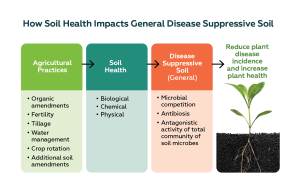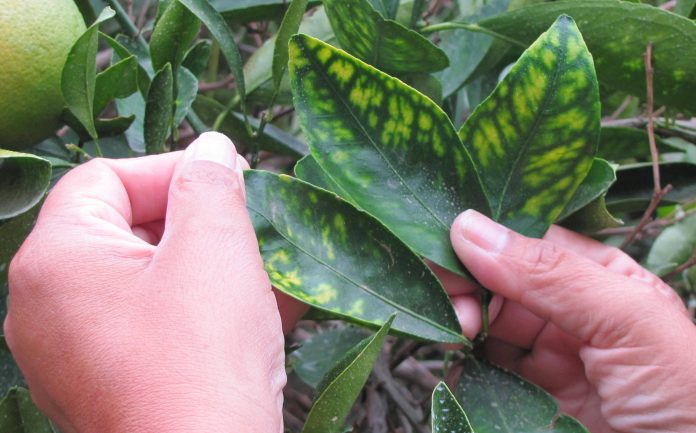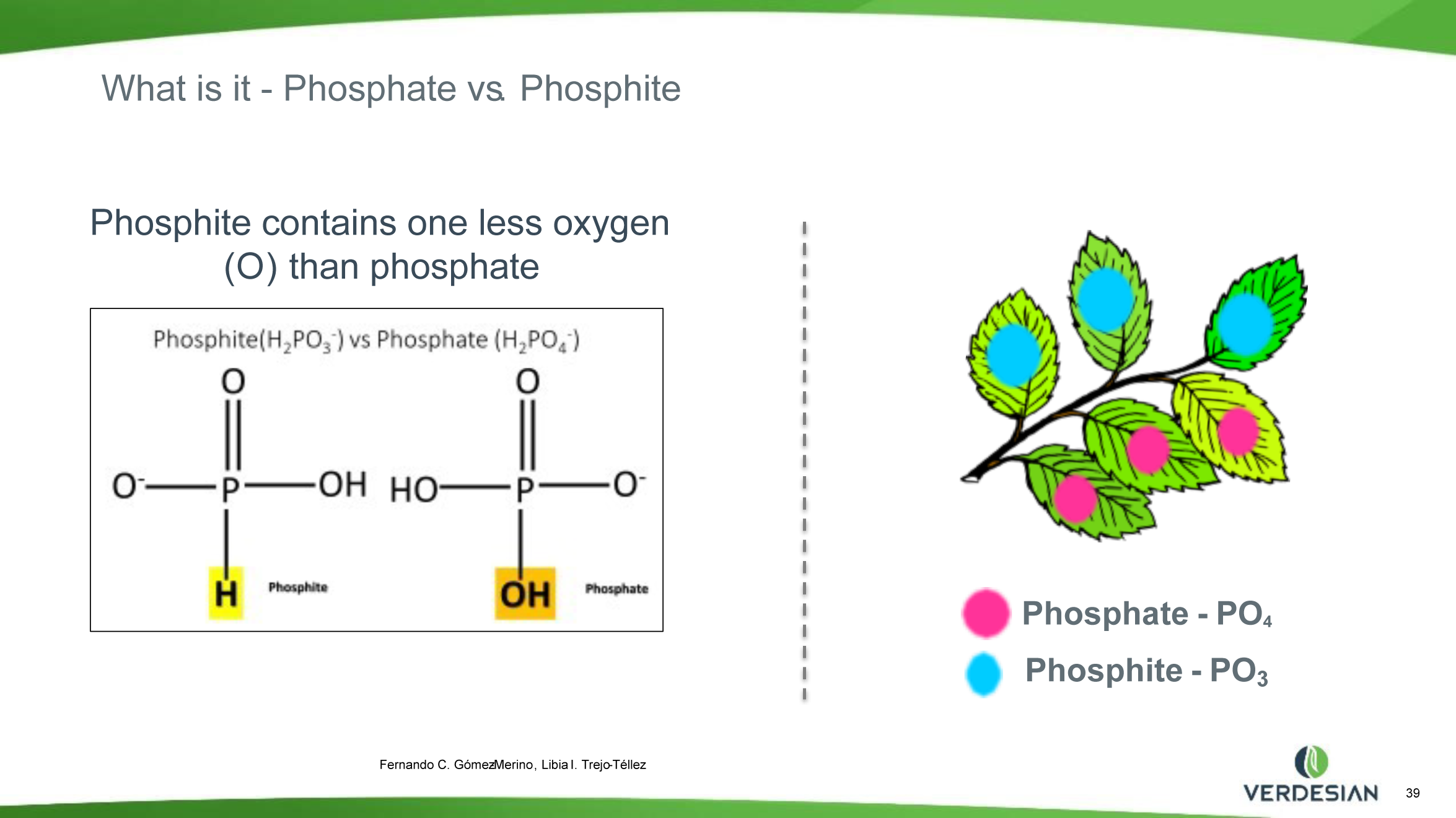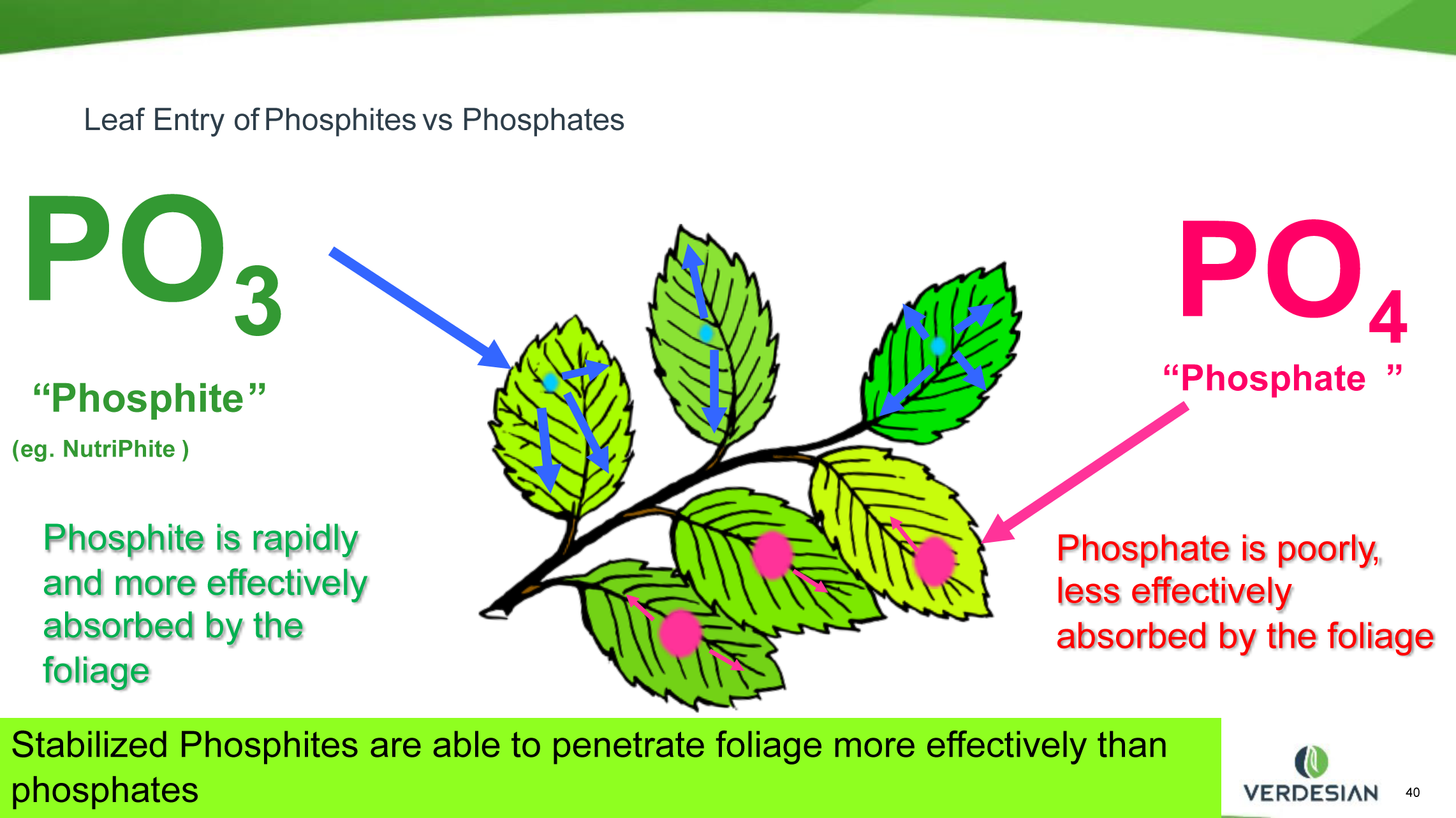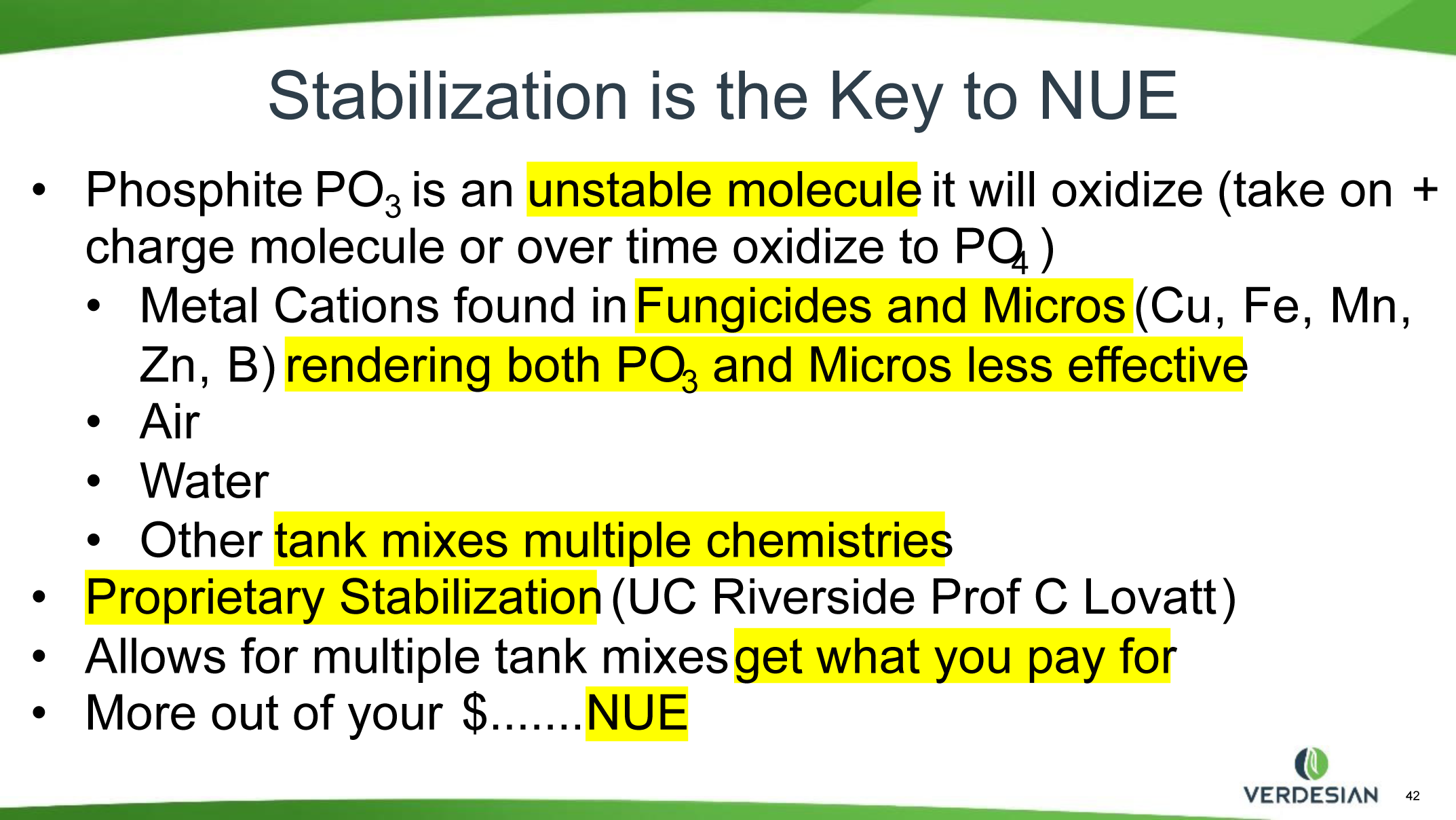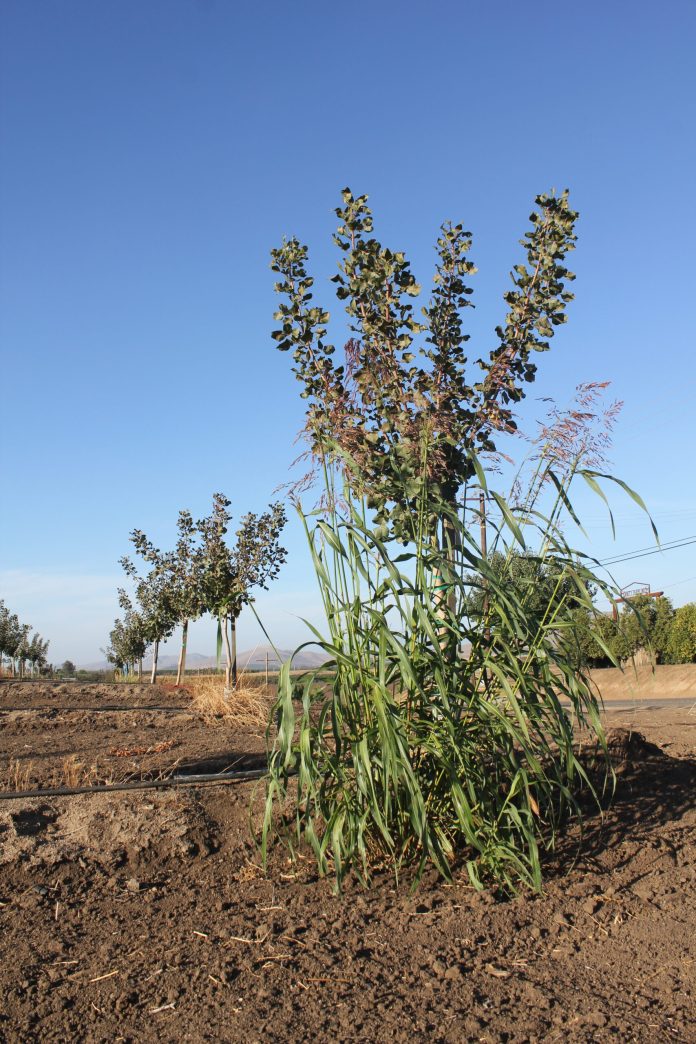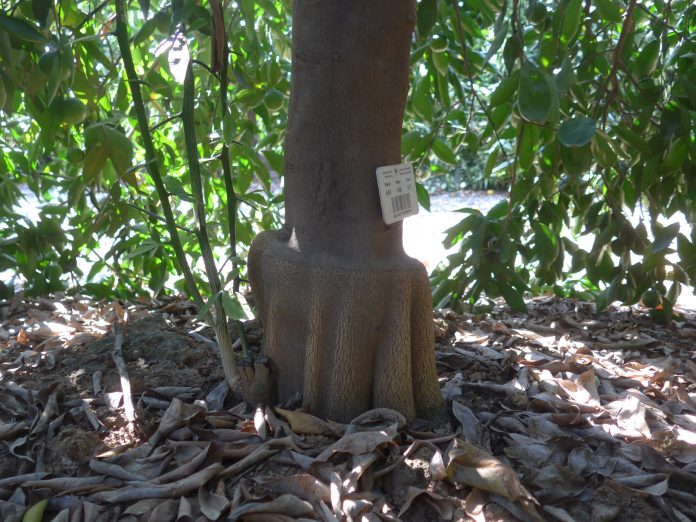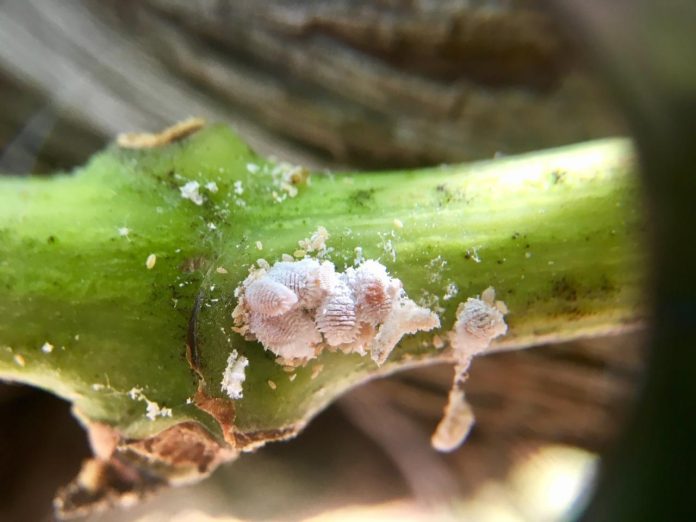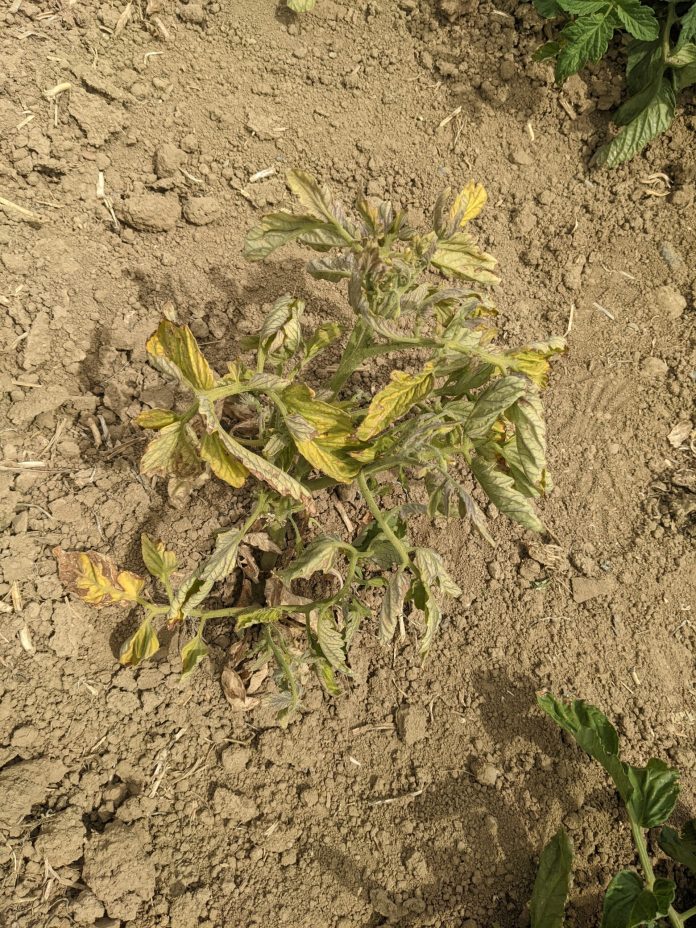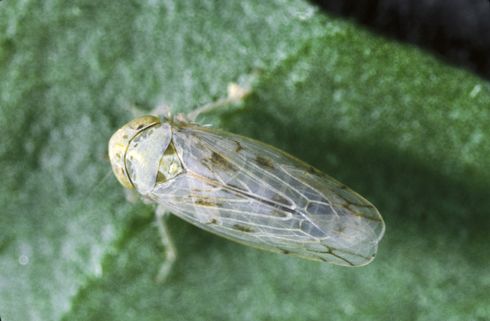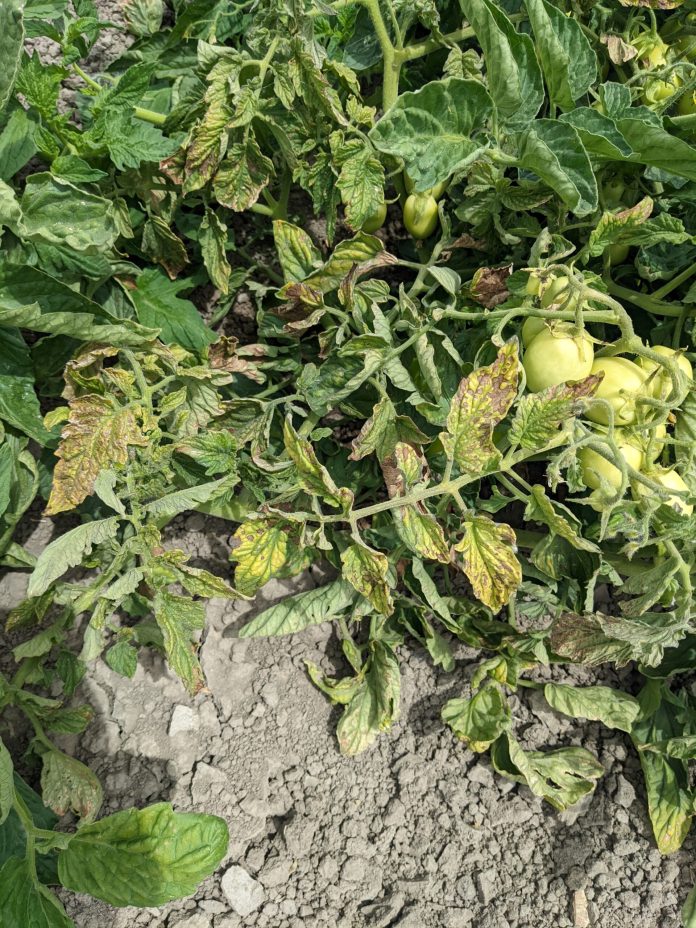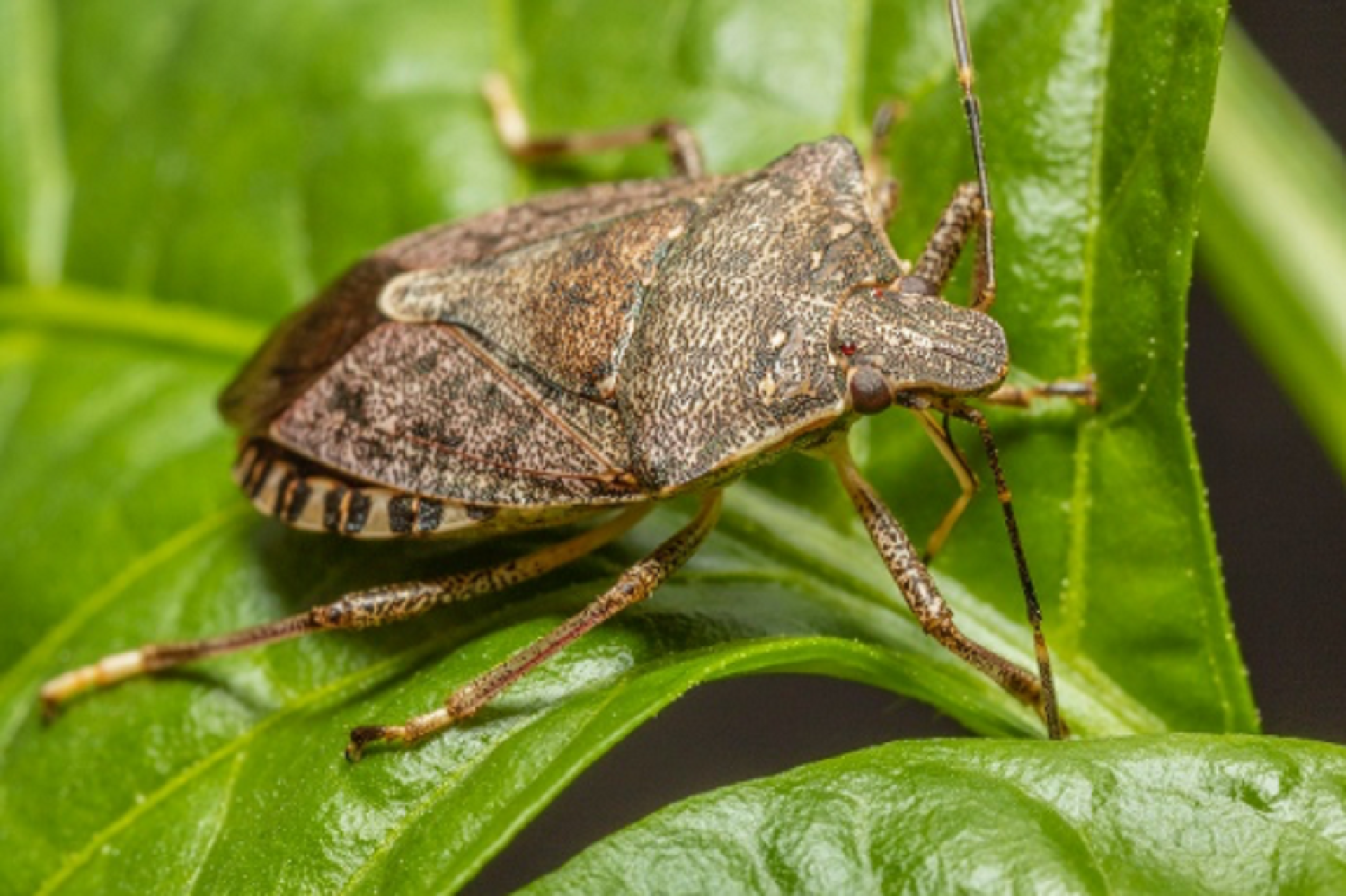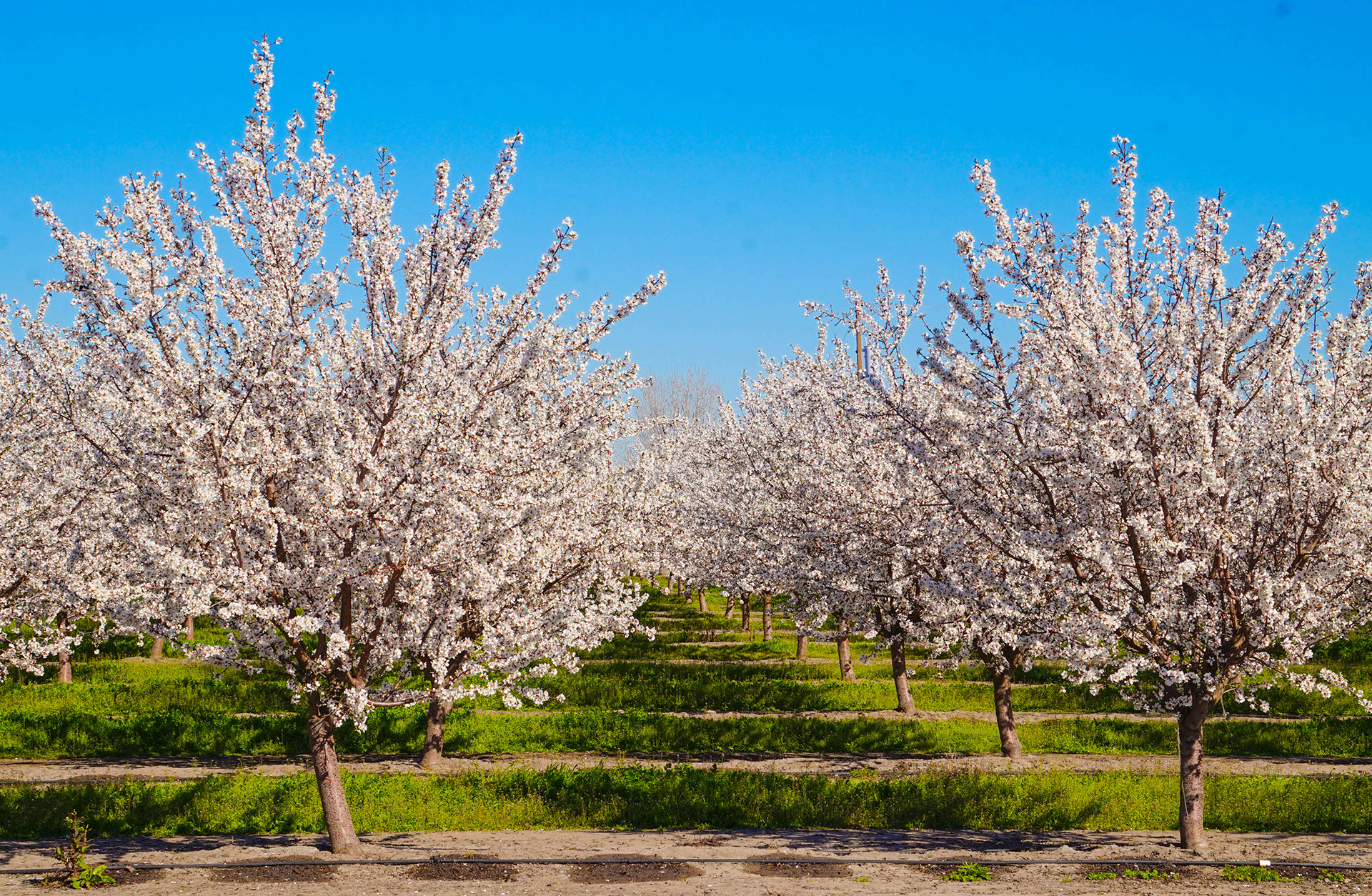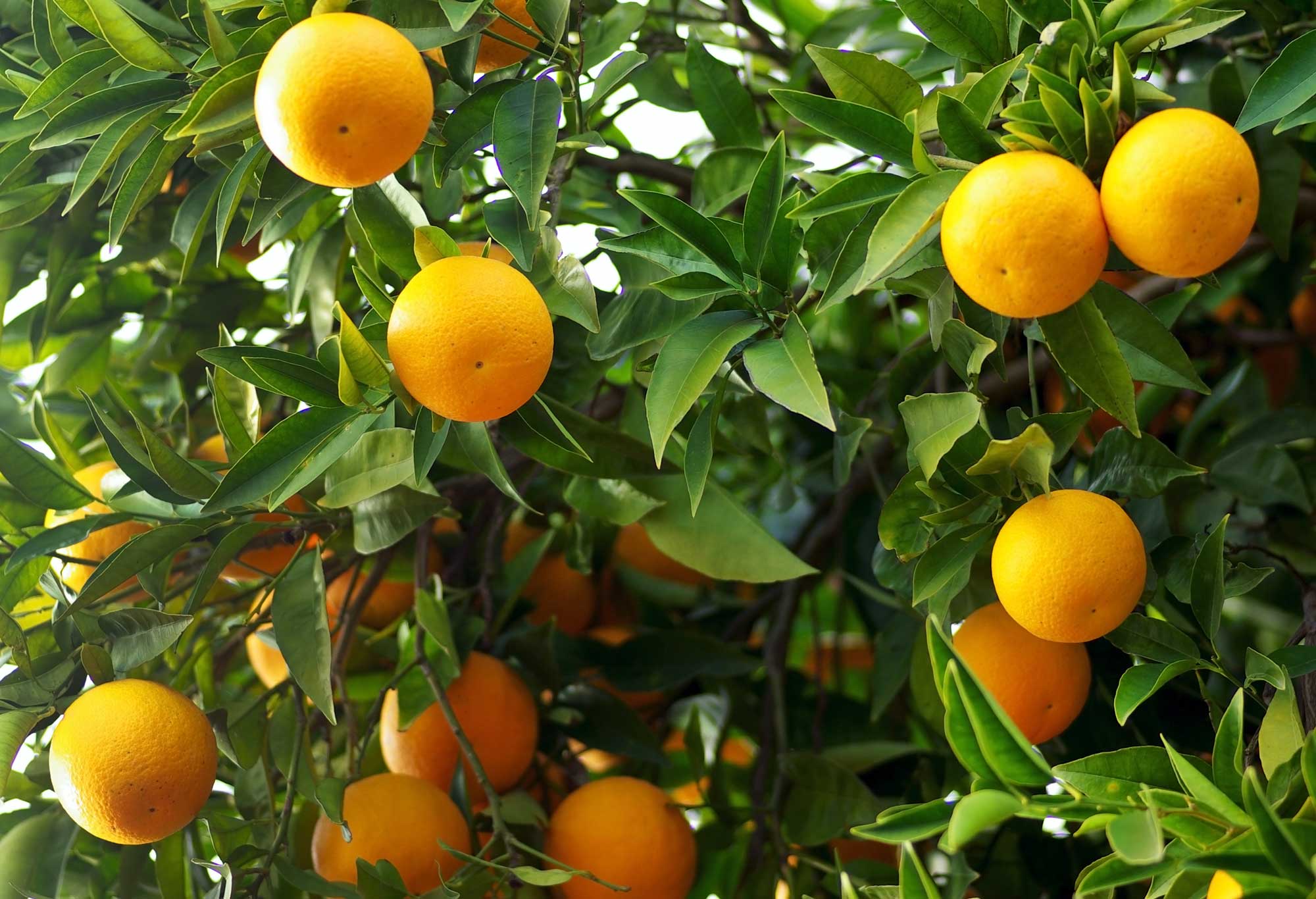It is estimated that approximately 78 million acres in the western San Joaquin Valley are affected by soil salinity, with 30% of that acreage categorized as strongly or extremely saline (Scudiero et al. 2017). In soil, salinity refers to the presence of dissolvable ions like sodium, potassium, magnesium, calcium, chloride and nitrate. Salinity stress in crops occurs either from high concentration in the soil solution of specific ions like Na and Cl or mixes of several soluble salts. Geological processes in the San Joaquin Valley (accumulation of marine coastal alluvium) and low-quality irrigation water are major contributors to soil salinity (Corwin 2003). Additionally, as crops absorb water, and water evaporates from the soil surface, salts are left behind in the rootzone. Crops growing in saline conditions experience osmotic stress, diminished growth, yield and shortened lifespan (Figure 1). With little access to high-quality irrigation water and ongoing drought, there are few solutions to alleviate salinity. Updated management practices are required to face the situation at hand.
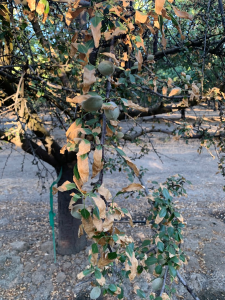
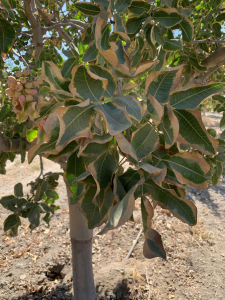
The most traditional method to manage soil salinity is by application of calcium in the form of gypsum (CaSO4 ·2H2O). As CaSO4 breaks down it yields calcium (Ca) and sulfate (SO42-) ions. Calcium works to desorb Na from the soil particle surface while the remaining sulfate binds the loose Na to yield sodium sulfate (Na2SO4). In turn, the newly formed sodium sulphate can be leached and moved down the soil profile and out of the rootzone. Additionally, replacing Na with Ca flocculates the soil for improved water infiltration and pore space. However, the application of gypsum as a sole salinity manager has challenges. Gypsum may require specialized machinery and equipment to facilitate applications in water-saving drip line, and attention should be paid to water quality or Ca may precipitate and plug the irrigation system. Finally, it is not uncommon to see Ca stratification in the soil from years of broadcast applications that have not fully dissolved or incorporated.
The standard practice for salinity management is a 0.5- to 2-ton/ac application of gypsum in the fall in anticipation of fall/winter rain. This practice has become the feel-good practice of many growers to date. However, updating such a practice becomes necessary when considering the current effects of climate change and economic circumstances. 2021 marked the driest winter months in 100 years with record lows of snow and rainfall as well as the third year of extreme drought. No rainfall and low access to irrigation water means little of the surface-applied gypsum is dissolving in the soil. With less access to surface water, more reliance on ground water and decreasing crop prices, growers now more than ever should reassess their management practices.
Modern methods for salinity management focus on high solubility products, ease of application and efficiency. CATION-EX5 PLUS is a salinity management product formulated by AgroPlantae. It is fully miscible with water and better suited for fertigation systems than traditional gypsum and contains other important elements to help rebalance soil, improve fertility and invigorate soil microbes. CATION-EX5 PLUS is 0-0-5, Ca 10%, S 8%, Co 0.10% and Mo 0.10%.
The following are results of a three-year study on soil salinity management in California’s Tulare Basin. Treatments were designated Grower’s Standard or CATION-EX5 PLUS. The Grower’s Standard (GS) consisted of a yearly postharvest application of broadcast gypsum 95% at a rate of 1 ton/ac in an 80-acre block and multiple in-season solution-grade gypsum applications through the irrigation system. AgroPlantae’s CATION-EX5 PLUS (CTX) was applied at 11 gal/ac over 80 acres, split into five applications over the growing season. Soil samples were taken in a predetermined area of each treatment block in 12-inch increments until 5 ft depth was achieved. Soil samples were taken in the spring before the first irrigation occurred and again in the fall after the last in-season irrigation in each year of the study. The spring sample acted as a baseline for the year while the fall soil sample showed the changes that occurred in the soil during the span of the crop growing months.
CATION-EX5 PLUS Reduces Salinity Buildup
Soil Electrical Conductivity (EC) is the measure of soil salinity. EC is highly influenced by soil texture, i.e., sand, silt and clay. For example, clay-like soils attract and retain more positive charges (cations) and have higher EC values than other soil textures. Based on saturation percentages, the soil in both treatment blocks was determined to be clay-loam. Aside from soil texture, soil EC is also highly affected by inputs like irrigation water and fertilizer.
In this study, a greater degree of variability was seen in GS treatment when compared to CATION-EX5 PLUS (Figure 2). In 2020, EC values were comparable amongst treatments. However, in 2021 and 2022, large increases in soil EC were seen in the GS treatment. EC increased 24%, 742% and 573% in the GS treatment for 2020, 2021 and 2022, respectively. The red dotted line represents the average EC for the soil profile. The large increase in values suggests the GS treatment is neither remediating nor alleviating water penetration or infiltration. In the CTX treated area, EC decreased on average by 14%, increased by 145% and 117% in 2020, 2021 and 2022, respectively. With the application of CATION-EX5 PLUS, soil is maintaining a manageable EC level and showing greater performance for managing soil salinity when compared to conventional gypsum (GS). The increases seen in the GS area call for an update to salinity management practices.
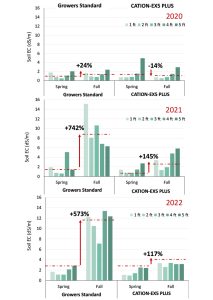
Managing Soil Sodium and Chloride
Sodium chloride (NaCl) is the most common and problematic salt in irrigation water. Sodium in soil antagonizes uptake of other beneficial elements like K, disperses soil and can create chemical compaction.
At the start of the experiment in 2020, soil sodium was comparable amongst treatments (Figure 3). In the GS treatment, a clear Na increase is seen from spring to fall in each experimental year. The red dotted line represents the average Na for the soil profile. Overall, the GS increased 53%, 654% and 429% soil Na concentration in 2020, 2021 and 2022, respectively. Comparatively, in the CATION-EX5 PLUS treated field, soil sodium decreased by 4%, increased by 162% and 82% in 2020, 2021 and 2022, respectively. An increase in soil Na cannot be avoided but it can be managed to reduce toxicity, osmotic stress and mitigate growth/yield. Additionally, in 2022 CTX treated soil is beginning to show an effect carry over rate. In 2022 CTX treated soils showed little fluctuation in soil Na. This alludes to the lasting effects of proper soil flocculation.
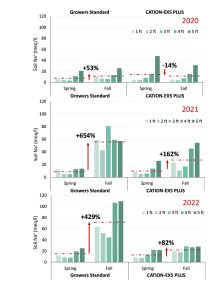
Soil Cl is an essential element needed by plants for growth, however when too much Cl is available in the soil, toxicity occurs. Cl toxicity is common in poorly drained soil and areas being irrigated with ground water. Cl is negatively charged, so it may be leached through the soil profile with irrigation water. When irrigation water is the largest contributor of Cl, and soil Na creates an environment for poor soil drainage, management becomes more critical. When soil Cl exceeds 5 meq/L, a management protocol should be activated.
In this trial, soil Cl began the experiment below the action threshold in both treatments (Figure 4). The red dotted line represents the average Cl for the soil profile. As the experiment progressed, Cl concentration built in the soil profile. In 2021, the GS increased the soil concentration about 2257% from spring to fall and about 697% in 2022. The CTX treatment had lower increases of 378% and 112% from spring to fall in 2021 and 2022, respectively.
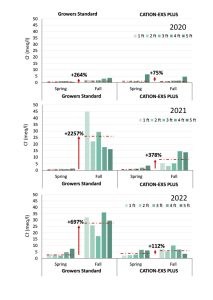
No soil infiltration measurements were collected for this study; however, the data suggest an increase in water movement and wetted area in the soil profile. This is corroborated with the reduction in Na and Cl as well as EC. CTX is improving soil structure and remediating soil salinity.
The increases in soil EC and Na seen in the GS treatment call for an update to salinity management practices. Experimental data from this long-term and large-scale trial show CATION-EX5 PLUS effectively managing soil salinity, especially when compared to the standard yearly gypsum application. Modern agriculture puts great emphasis on efficiency, precise solutions and ease of use while still demanding results. CATION-EX5 PLUS offers results, efficiency, precision and ease of use in fertigation systems like those used in California’s Central Valley.

